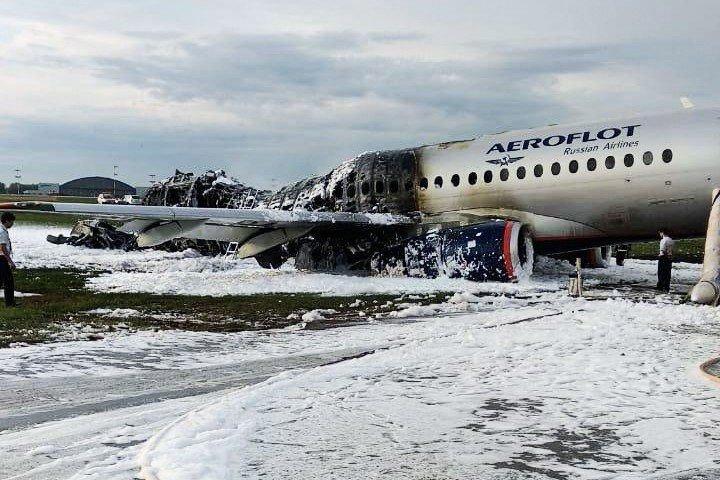Russian Passenger Plane Crashes Near Tynda, Amur Region: All 49 Onboard Feared Dead
A routine domestic flight in eastern Russia turned tragic Thursday morning when an Angara Airlines aircraft reportedly crashed in the remote Amur region. The Antonov An-24, carrying 49 people including six crew members and five children, lost contact with air traffic control as it neared the town of Tynda. Local authorities and emergency crews believe there are no survivors.
Timeline of Events Leading to the Crash
The twin-engine Antonov An-24 departed from an undisclosed location en route to Tynda, a remote town in Russia’s Far East near the border with China. Not long before it was expected to land, the aircraft vanished from radar.
- Time of disappearance: Morning hours, local time
- Last known location: Roughly 16 kilometers outside of Tynda
- Aircraft type: Antonov An-24, a model from the late 1950s
Shortly after the plane went missing, Russia’s Civil Aviation Authority dispatched an Mi-8 helicopter to search the heavily wooded mountainous terrain around Tynda. According to the emergencies ministry, the search helicopter spotted what they called a “burning fuselage” on a nearby mountainside.
Official Statements Offer Grim Outlook
In a statement shared on Telegram and quoted by Reuters, Russia’s emergencies ministry confirmed grim news:
“An Mi-8 helicopter operated by Rosaviatsiya has spotted the burning fuselage of the aircraft.”
Vasily Orlov, the regional governor of Amur, confirmed the identities of those onboard based on preliminary information:
“There were 43 passengers, including five children and six crew members.”
Emergency responders were immediately mobilized. According to AFP, 25 personnel, five ground units, and four standby aircraft were sent to the area. Despite these efforts, local rescuers reported seeing no visible signs of survivors from the air.
Challenging Terrain Complicates Rescue Efforts
Rescue operations faced significant hurdles. Dense forest cover and rugged mountainous geography made it difficult for teams to reach the site. A responder told TASS, Russia’s state news agency:
“The main search operations are being conducted from the air. Ground access is proving extremely difficult.”
The crash site lies around 16 kilometers from Tynda, in an area with limited road access and no immediate infrastructure for emergency landings or helicopter docking.
Officials and first responders remain on high alert, yet expectations are pragmatic. Based on visible damage and ongoing fires, hopes for any survivors have dimmed.
Community Reaction Across Russia
News of the crash has reverberated across the Russian Far East and beyond. Many residents in Tynda and the broader Amur region have expressed grief and growing concerns over aviation safety—especially in remote territories, where regional airlines often operate with older aircraft.
Though local officials have yet to release full passenger identities, people in Tynda are reportedly gathering at the airport and nearby community centers in search of information about loved ones.
Prayer vigils and informal memorials are starting to appear outside the town’s transport hub.
The regional government has also issued a public statement urging the media to refrain from spreading unconfirmed information, asking the public for patience and empathy during rescue and recovery efforts.
The Antonov An-24: A Closer Look
The crashed airliner—an Antonov An-24—is a Soviet-era aircraft developed in the 1950s. Though no longer in widespread international operation, the An-24 remains used within Russia for short-haul flights in difficult terrain. Known for its durability and ability to land on unpaved airstrips, the model has had safety issues in recent decades due to age and maintenance concerns.
More than 1,000 units of the Antonov An-24 were manufactured. Still, most global airlines have retired it due to its age and evolving aviation safety standards. In Russia’s remote regions, where road infrastructure is limited and modern aircraft are scarce, you’ll still find older planes in service.
This flight, operated by Angara Airlines, a small carrier based in Siberia, is part of that story—an airplane past its prime navigating skies that are difficult even in the best of conditions.
Weather and Visibility Issues Cited
While investigating the root cause of the incident, the TASS news agency shared that preliminary assessments point to a landing error made in poor visibility conditions. Mist, snow, and low cloud cover were reportedly present in the region at the time of the attempted landing.
If confirmed, this crash may raise new discussions on safety protocols and the viability of older aircraft being used under such circumstances.
Some within aviation circles are questioning the limits of current equipment and pilot training under adverse conditions. But others argue that the real challenge lies in underfunding and the logistical challenges posed by operating in Russia’s vast and often inaccessible geography.
What’s Next? The Road Ahead After the Tragedy
Russian federal aviation authorities have launched a full-scale investigation. Flight data recorders, more commonly known as black boxes, must be recovered to understand exactly what happened inside the cockpit during those final seconds.
The airline, Angara, has yet to release a detailed statement but is reportedly cooperating with federal investigators. They’ve halted flights with the Antonov An-24 model until further notice.
The Ministry of Emergency Situations and other local responders will continue recovery efforts through the weekend. While the prospects of finding survivors are slim, local officials are promising transparency and swift updates.
This loss will likely prompt authorities to take a harder look at flight safety regulations in Russia’s remote territories. There may also be renewed urgency to upgrade aging aircraft fleets still in service across the Siberian and Far Eastern regions.
If You’re Wondering, What Can You Do?
If you have family members or friends who were traveling in the region, authorities recommend contacting local emergency hotlines rather than the airline directly. Social media has begun circulating passenger manifests, but many are unverified.
Donating to official emergency relief funds or local organizations offering counseling services may help impacted families in the difficult days ahead.
As for now, Tynda mourns quietly while Russia waits—hoping for answers, grieving a journey that never reached its end.

